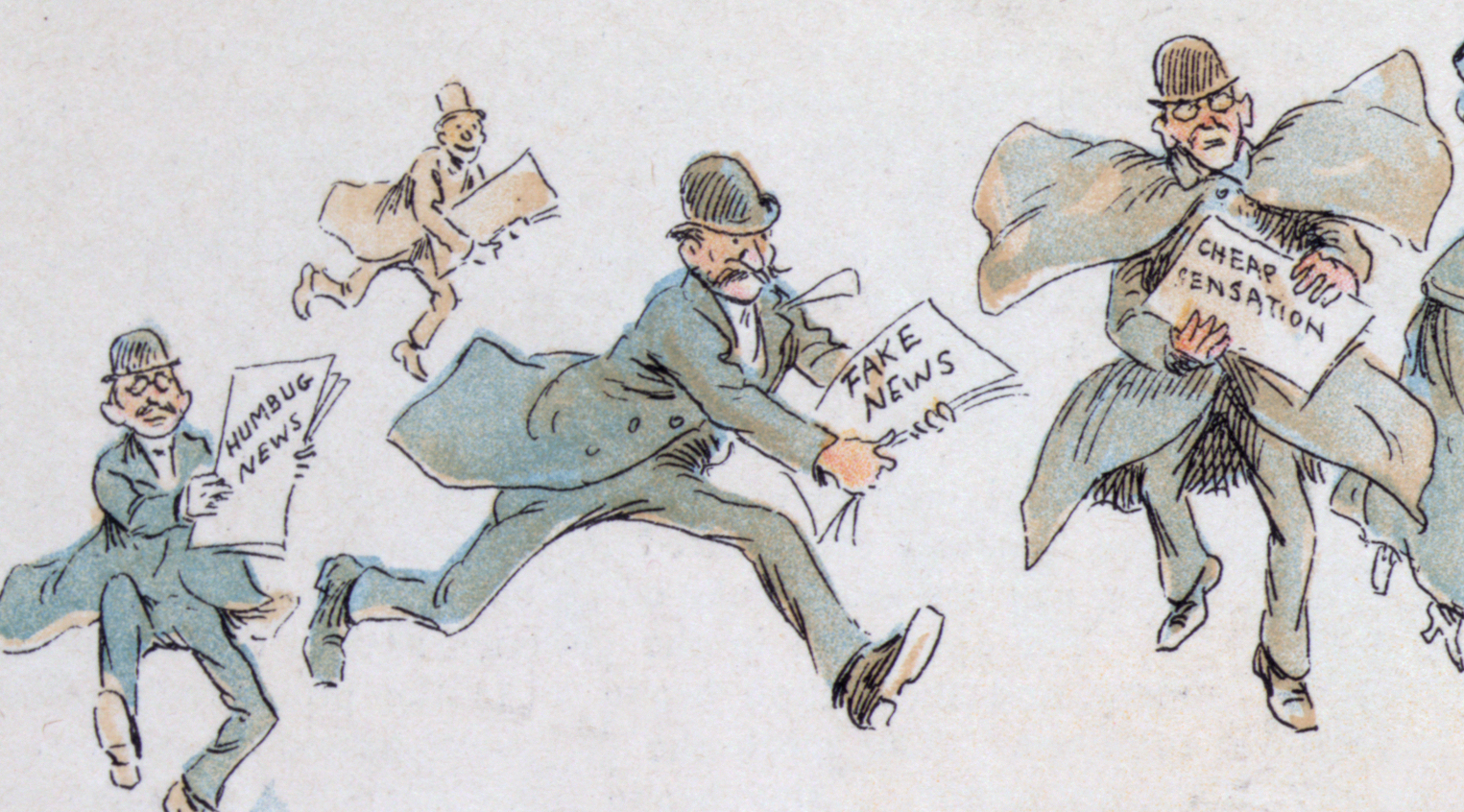Although the phrase might appear to be a modern invention, examples of fake news can be found throughout history.
Historical
King George II

Portrait by Thomas Hudson, 1744
Inaccurate and false news was circulated about George II, King of Great Britain and Ireland in the mid 1700s. As a King, he was to be seen as a strong, healthy leader. At that time, the King was facing a rebellion. False news about the King being in poor health was printed from sources on the side of the rebels. Other printers republished these false stories and this harmed the King's public image. It was difficult to judge fact from fiction. The rebellion did not succeed, but having these stories in print and republished time after time shows how easily this type fake news could attribute to change people's perceptions and opinions.
Creatures and Life on the Moon, 1835

Lithograph of the Ruby Amphitheater on the Moon
On 21 August 1835, The New York Sun published an article about how life on the Moon had been scientifically discovered (with a super-powerful telescope!) which inhabited such animals as unicorns, flying bat-men and two-legged beavers. The story was falsely attributed to a well known astronomer called Sir John Herschel which helped people believe the story was true. The articles were reprinted throughout Europe helping to spread the news. The news story proved popular and the number of readers buying the paper increased rapidly as they wanted to find out more about the discovery.
War - "Germans and their Dead"

Kaiser (to 1917 Recruit). "And don't forget that your Kaiser will find a use for you—alive or dead."
Punch, 25 April 1917
In 1917 during the First World War, The Times and Daily Mail published stories from anonymous sources claiming to have visited the Kadaververwertungsanstalt, or corpse-utilisation factory where Germans were extracting fat from the bodies of dead soldiers on both sides of the war to make soap and margarine. The story came from and attributed to an official British government department, the M17 and was spread to the press to publish the stories in order to help persuade and convince readers that Germany had to be defeated.
Most recent
COVID-19 fake news

Coronavirus fake news or false information stories has spread rapidly during the pandemic. Here is one of the most circulated COVID-19 stories:
'If you can hold your breath for 10 seconds, then you don't have the virus'.
The message had been shared more than 30,000 times on Facebook reaching people all over the world claiming to tell people to try the simple test and "if this can be done without coughing, without difficulty this shows that there is no fibrosis in the lungs, indicating the absence of infection. It is recommended to do this control every morning to help detect infection."
For more information on the history of fake news, take a look at Ian Hislop's Fake News: A True History, BBC Documentary available through Box of Broadcasts.








